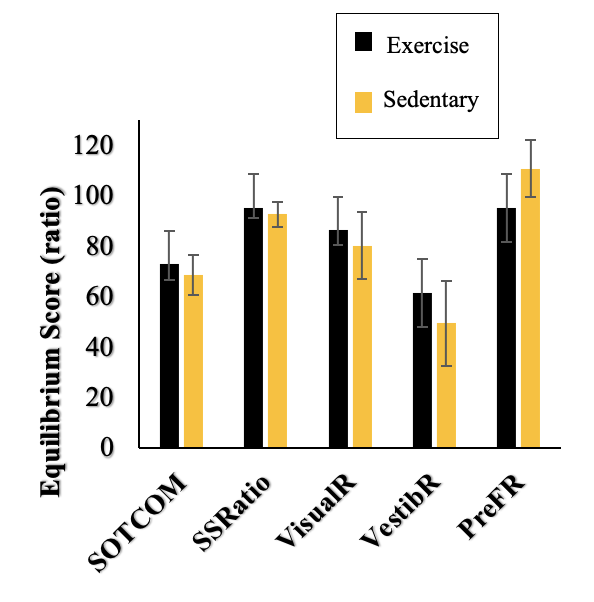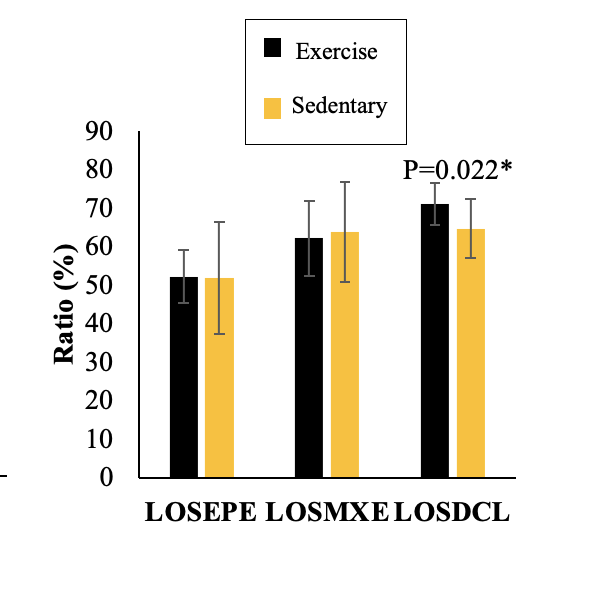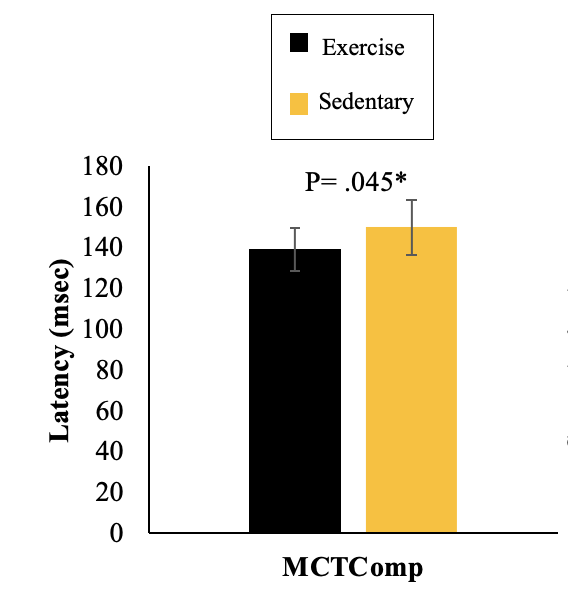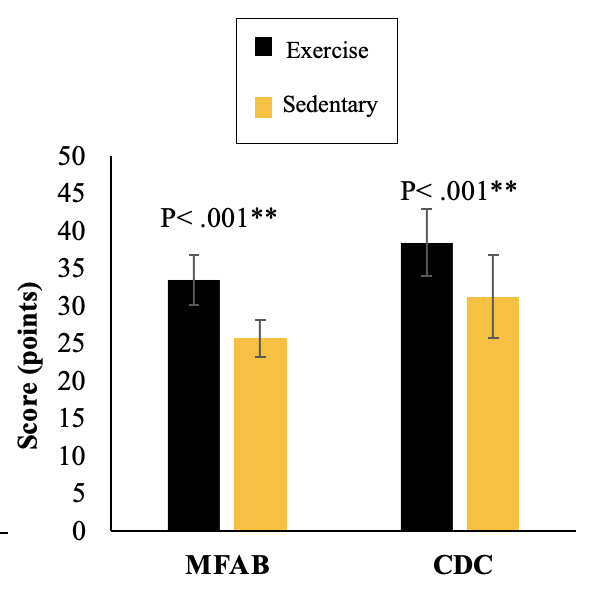Category: Allied Healthcare Professionals
Objective: To determine ideal assessment for detecting exercise-induced differences in postural stability of individuals with early-stage Parkinson’s Disease (PD).
Background:
Postural instability (PI) is a debilitating symptom of PD that presents even in early disease states, contributing to increased fall rates and progressive loss of independence. Exercise interventions that incorporate strength and balance training are known to improve postural stability, especially during early stages of PD. Several standardized assessments of balance and technologies have been developed to assess PI. Current literature is inconclusive regarding which is ideal to quantify PI. The purpose of this study was to compare computerized posturography (CDP) and functional balance outcomes to assess which is ideal for identifying exercise-induced PI changes in individuals with early-stage PD.
Method: Thirteen individuals with PD who participated in a structured exercise class (EX= 70.1±6.1 years) were the exercise group and twelve sedentary individuals served as controls (SED=68.5±5.02 years). Participants underwent a CDP test battery: sensory organization (SOT), motor control (MCT), and limits of stability (LOS). The Modified Fullerton Advanced Balance (MFAB) and 4-stage CDC (CDC) tests were utilized to quantify balance.
Results: Between-group CDP analysis showed no differences in performance on SOT or LOS outcomes, excluding directional control. Exercisers exhibited better motor control with faster reaction times during horizontal translations (EX= 139.7±10.75msec, SED= 150±13.5msec, p<0.05) and more directional control approaching stability limits (EX= 71.08±5.34%, SED= 64.6±7.6, p=0.022). Exercisers had better dynamic and static balance according to the MFAB (EX= 33.5±3.3, SED= 25.8±4.5 p<0.01) and CDC scores (EX= 38.5±2.48, SED= 31.3±5.6 p<0.01).
Conclusion: CDP tests detected minimal differences in PI between exercisers and non-exercisers, but functional assessments did detect between group differences. CDP outcomes were designated above average, while MFAB and CDC scales classified exercisers as highly functional and sedentary individuals as fall risks. These data suggest that CDP is inadequate for evaluating aspects of PC impacted by exercise. Standardized assessments that address functional performance are ideal to assess exercise-induced changes in postural stability.
References: 1. Shulman LM, Gruber-Baldini AL, Anderson KE, et al. The evolution of disability in
Parkinson disease. Mov Disord. 2008; 23(6): 790–6.
2. Maserejian N, Vinikoor-Imler L, Dilley A. Estimation of the 2020 Global Population of
Parkinson’s Disease (PD). Mov Disord. 2020; 35 (suppl 1).
3. Bloem BR, Grimbergeb YAM, Cramer M, et al. Prospective assessment of falls in
Parkinson’s disease. J. Neurol. 2001; 248: 950–958.
4. Matinolli M, Korpelainen JT, Sotaniemi KA, et al. Recurrent falls and mortality in
Parkinson’s disease: a prospective two- year follow-up study. Acta Neurol. Scand.
2011; 123: 193–200.
5. Canning CG, Sherrington C, Lord SR, et al. Exercise for falls prevention in Parkinson
disease: a randomized controlled trial. Neurology. 2015; 84: 304–312.
6. Frazzitta G, Maestri R, Bertotti, et al. Intensive rehabilitation treatment in early Parkinson’s
disease: a randomized pilot study with a 2-year follow-up. Neurorehabil. Neural Repair.
2015; 29: 123–131.
7. Schenkman M, Hall DA, Baron AE, et al. Exercise for people in early- or mid-stage
Parkinson disease: a 16-month randomized controlled trial. Phys Ther. 2012; 92: 1395-9.
8. Corcos DM, Robichaud JA, David FJ, et al. A two-year randomized controlled trial of
progressive resistance exercise for Parkinson’s disease. Mov Disord. 2013; 28: 1230–40.
9. Cherup NP, Buskard ANL, Strand KL, et al. Power vs strength training to improve
muscular strength, power, balance, and functional movement in individuals diagnosed with
Parkinson’s disease. Exp Gerontol. 2019; 128.
10. Miyai I, Fujimoto Y, Yamamoto H, et al. Long-term effect of body weight– supported
treadmill training in Parkinson’s disease: a randomized controlled trial. Arch. Phys. Med.
Rehabil. 2002; 83: 1370–3.
To cite this abstract in AMA style:
E. Doctor, R. Bliss, J. Kanaley. Discrepancies in postural stability outcomes measured by computerized dynamic posturography and functional balance assessments in Parkinson’s Disease [abstract]. Mov Disord. 2022; 37 (suppl 2). https://www.mdsabstracts.org/abstract/discrepancies-in-postural-stability-outcomes-measured-by-computerized-dynamic-posturography-and-functional-balance-assessments-in-parkinsons-disease/. Accessed April 2, 2025.« Back to 2022 International Congress
MDS Abstracts - https://www.mdsabstracts.org/abstract/discrepancies-in-postural-stability-outcomes-measured-by-computerized-dynamic-posturography-and-functional-balance-assessments-in-parkinsons-disease/




